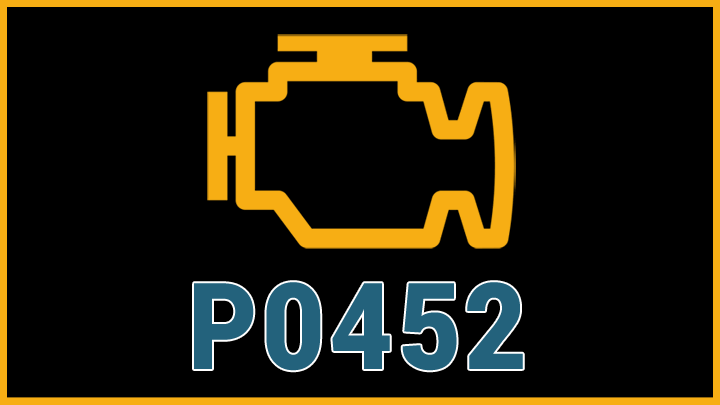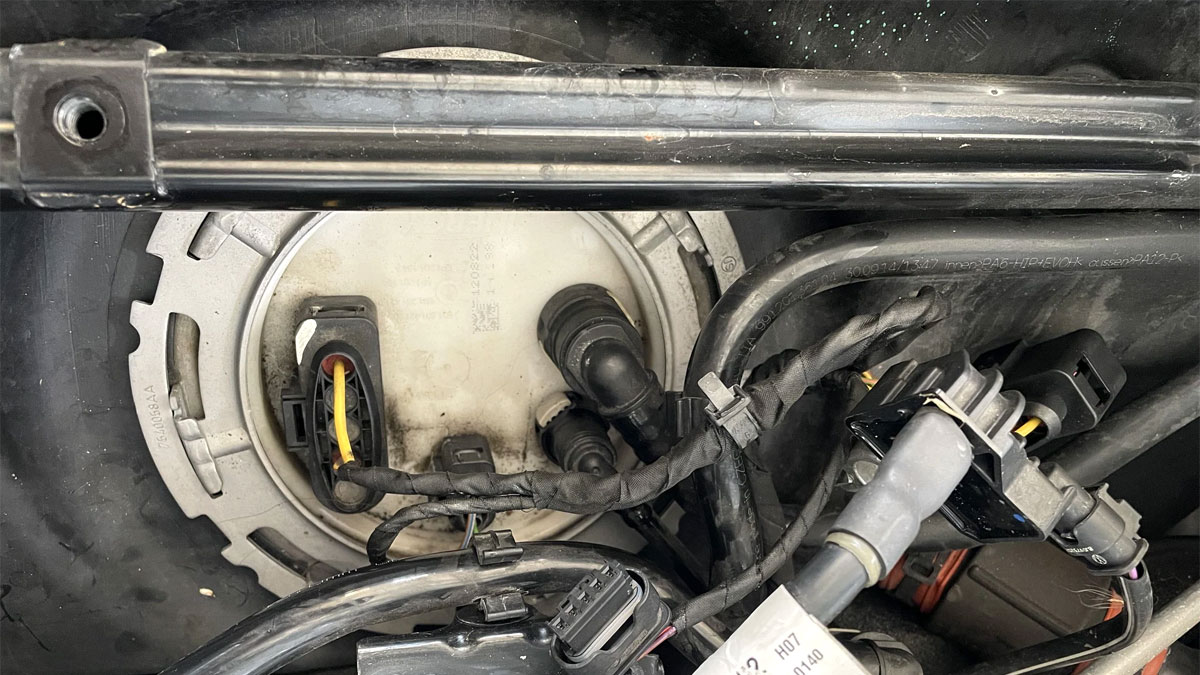P0452 Code (Symptoms, Causes, and How to Fix)
Emissions systems rely on accurate sensor data, but failure can occur over time. Code P0452 indicates low voltage at the evaporative emissions pressure sensor.
This guide will explain common causes of a P0452 code, whether it’s safe to continue driving, and how to properly fix this issue to get that check engine light cleared before your next drive.

What Does Code P0452 Mean?
Diagnostic fault code P0452 is indicative of an issue within a vehicle’s evaporative emissions control system. Simply put, the presence of this fault indicates that a vehicle’s fuel tank pressure sensor is unable to properly monitor the internal pressure within a vehicle’s fuel tank. Feedback from this sensor is used to tabulate the proper formula to keep noxious vehicle emissions at a minimum.
A vehicle’s fuel tank pressure sensor is often located within the upper region of the fuel tank itself, or alternatively, within one of the tank’s connected vapor lines. In many cases, remedying this concern requires a vehicle’s fuel tank to be dropped, before replacement or repair can commence. This tends to be a relatively labor-intensive and time-consuming prospect.
Other EVAP Codes: P0446, P00449, P0455, P0456, P0453, P0457
Symptoms of Code P0452
Diagnostic fault code P0452 is seldom accompanied by any noticeable symptoms, outside of the illumination of a vehicle’s check engine light. In rare cases, one might notice an increase in the intensity of a vehicle’s fuel-related odor, though this is not always the case.
In any event, there is an extremely low possibility of driveability-related concerns presenting themselves in association with DTC P0452.
Causes of Code P0452

Diagnostic fault code Po452 can be caused by a host of potential underlying issues, some of which tend to be more severe in nature than others. Understanding the potential causes of this fault can prove quite beneficial when attempting to expedite a vehicle’s repair.
The following are several of the most common causes of DTC P0452.
- Faulty fuel tank pressure sensor
- Damaged fuel tank pressure sensor wiring harness
- Compromised fuel vapor lines
- Plugged or pinched vapor lines
- Faulty fuel pump module gasket
- Loose gas cap
Is Code P0452 Serious?
Diagnostic fault code P0452 is generally regarded as being of only moderate severity, as it is very unlikely to hamper a vehicle’s operation. Nonetheless, this fault code is every bit as worthy of your attention as any other fault code that might arise, as it signifies that your vehicle’s evaporative emissions system is operating at less than peak efficiency, and thus, is compromised.
One possible concern related to diagnostic fault code P0452 is the fact that a vehicle exhibiting this condition might prove incapable of passing state or locally-mandated emissions testing. This can prove troubling, as many states and/or municipalities stipulate that a vehicle must pass such testing, in order for its registration to be renewed.
In any event, the root cause of a vehicle’s P0452 fault code should be thoroughly diagnosed and repaired at the first available opportunity. Doing so often presents the underlying failure from compounding in severity thereby making the issue itself easier to remedy.
For that reason, an appointment should be made with a trusted service center at your earliest convenience.
How to Fix Code P0452

The following steps can be followed to assist in diagnosing and repairing the root cause behind your vehicle’s P0452 diagnostic fault code. As always, factory-specific service literature for your particular model of vehicle should be consulted before attempting any such repairs.
#1 – Check for Additional DTCs
Before beginning the diagnostic process, you should check for the presence of additional diagnostic fault codes. Any such codes should be thoroughly diagnosed before proceeding.
#2 – Retighten Gas Cap
Begin by making sure your vehicle’s gas cap is tight. If it is not, little further intervention will be required. Simply tighten your vehicle’s gas cap, before clearing the offending code with the use of an appropriate scan tool, and completing a thorough test drive.
Alternatively, a vehicle’s gas cap, if suspected of being faulty, can be replaced before following the same steps.
#3 – Check Vapor Hoses
In certain instances, it might be possible to check the integrity of a vehicle’s fuel vapor hoses. These hoses will route to and from the top of the fuel tank itself. Carefully check to make sure that none appear crimped or otherwise damaged.
#4 – Evaluate Sensor Wiring
To the extent possible, a fuel tank pressure sensor wiring should be inspected. This might be difficult to accomplish, due to its routing. Nonetheless, a certain amount of this wiring can often be checked with the use of satisfactory shop light and mechanics mirror. Any signs of damage should be addressed.
#5 – View Live Data
Next, one might find it helpful to assess live-streaming data presented by a vehicle’s fuel tank pressure sensor. This is accomplished with the use of a quality scan tool. All feedback data obtained should be compared to that supplied by a vehicle manufacturer.
#6 – Drop Fuel Tank for Full Assessment
If all prior steps fail to reveal any discernible issues, or if prior testing has pinpointed a vehicle’s pressure sensor to be at fault, you will be required to drop the fuel tank, fuel pump, and pressure sensor assembly as a whole.
This is necessary to facilitate replacement. Due to the nature of this job, professional assistance might be required.
- P0480 Code (Symptoms, Causes, and How to Fix) - Apr 19, 2024
- Car Temperature Gauge Stopped Working? (Here’s Why) - Apr 15, 2024
- Ignition Coil vs Coil Pack (What’s the Difference?) - Apr 8, 2024
